Optics and Photonics
Understand Optics and Photonics Through Simulation
Light interaction requires complex, multiphysics modeling. Optical components like lenses, mirrors, and filters involve modeling ray trajectories and wave optics on the scale of visible light wavelengths. Photonic components leverage nanostructures with dimensions smaller than the wavelength, requiring quantum mechanical and electromagnetics simulations. Light behavior is greatly impacted by environmental factors such as vibration, shock, and temperature fluctuations that must be taken into consideration when designing your product. If your component involves optics, is optically enabled, or utilizes photonic technologies, advanced simulation is critical.
If your component is optical in nature, optically enabled, or photonic, you need a robust simulation tool to predict and refine your design. Lean on the experts at DRD Technology to equip you with the means to simulate nano- to macro-level optical and photonic light behavior with Ansys optical solutions. Visualize your products thoroughly and accurately before prototyping with Ansys Optics and Ansys Lumerical Photonics.
Quickly solve complex optics and photonics problems with advanced Ansys simulations.
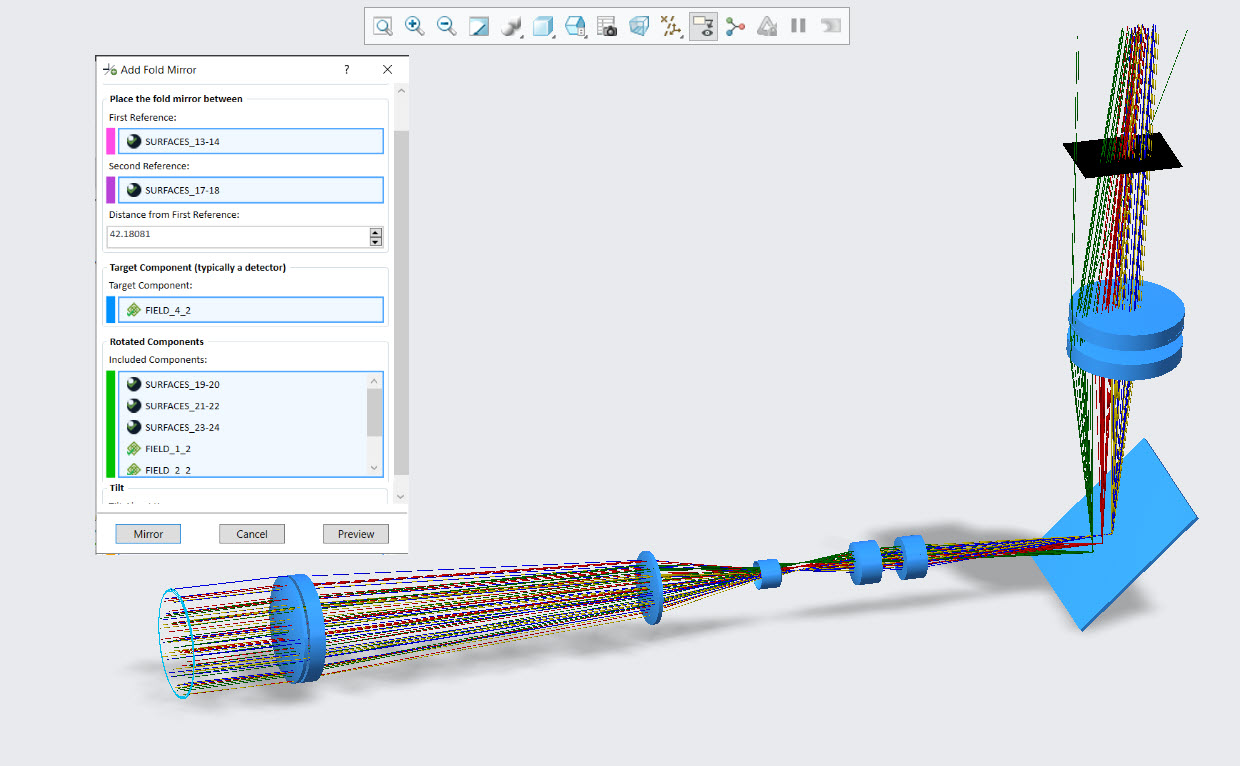
Ansys Zemax
Optomechanical Design
Accelerate your time-to-market by enabling effortless integration of optical and mechanical models with Ansys Zemax OpticsBuilder. Zemax facilitates seamless data exchange between optical design and CAD platforms, empowering comprehensive analysis of mechanical effects on optics. Convert lens design data into CAD format to evaluate tolerance and lens module stack-ups, optimize fiber coupling, and more. By unifying optical and mechanical simulation early in the development process, you can bring enhanced products to market faster.
Leverage Zemax’s robust toolset for tasks like lens stack optimization, optical/mechanical tolerancing, fiber-lens coupling design, and AR/VR exit pupil expander modeling. This software makes it easy to assess mechanical impacts on optical components like lens modules and model how factors like alignment and spacing influence performance. With Zemax’s multiphysics capabilities seamlessly connecting optical, mechanical, and manufacturing disciplines, you can refine designs for efficient manufacturing.
Ansys Speos
Optical System Design and Verification
Simulate human and sensor vision to perform detailed analysis of your optical systems using Ansys Speos. This software enables 3D environment integration, lighting design, and evaluation of human/camera vision and perception, helping you identify blind spots in your designs. Speos facilitates comprehensive modeling of illumination and optical behavior to forecast prototyping needs. Leverage Speos’ unparalleled capabilities early in development to optimize lighting, enhance visibility, accelerate prototyping, and bring perceptively superior products to market faster.
To best understand the way your product interacts with light, you need more computing power coupled with software that can truly leverage your hardware investment. For highly efficient scaling based on the number of cores you need to simulate, Ansys Speos includes a parallel direct sparse solver, a parallel PCG solver, and GPU acceleration for both shared and distributed memory parallel solvers.
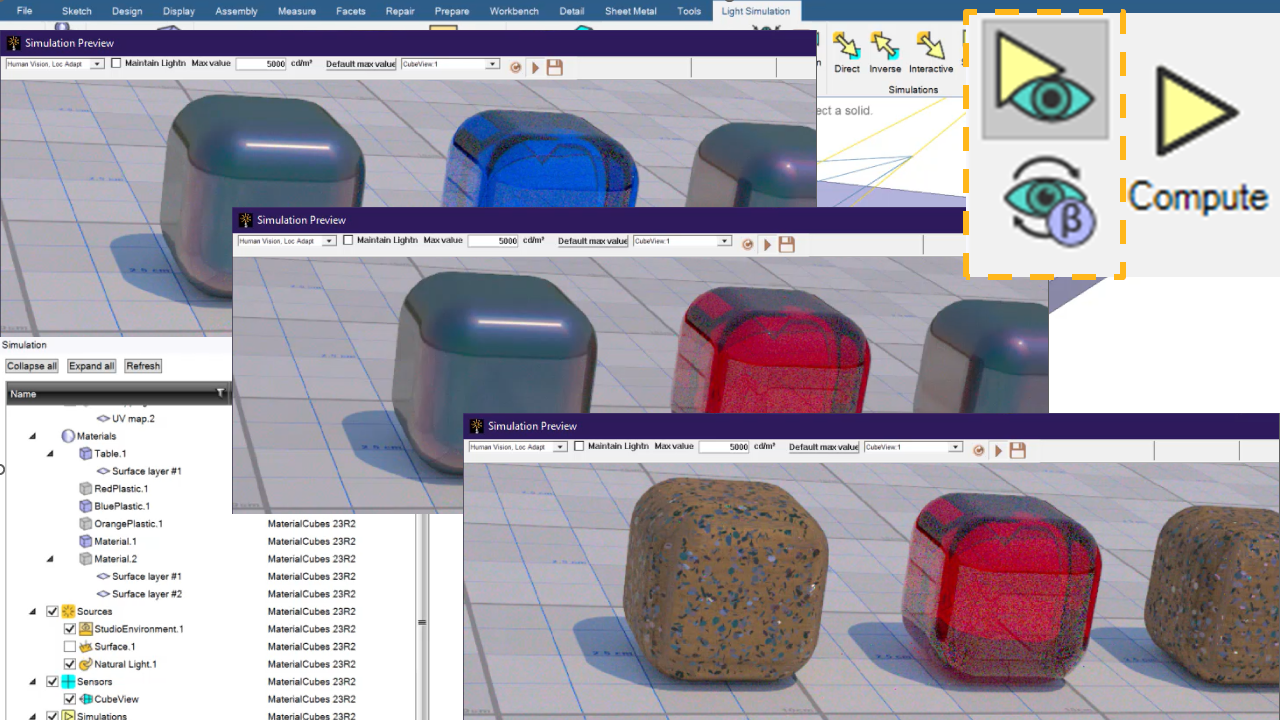
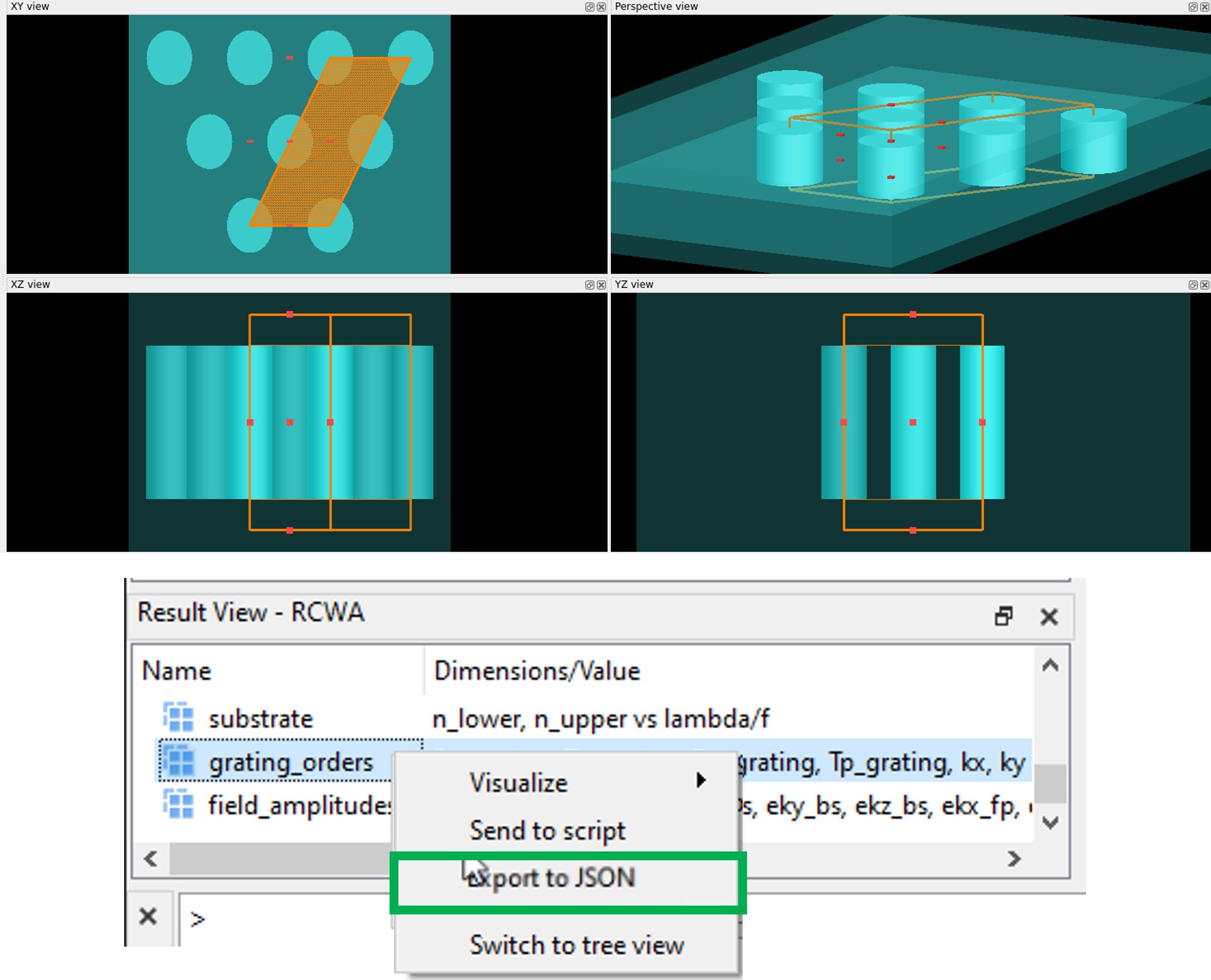
)Ansys Lumerical
Photonic Component Simulation
Model nanophotonic devices, processes, and complex materials using Ansys Lumerical Finite Difference Time Domain (FDTD). This streamlined multiphysics solver with built-in workflows enables accurate modeling of photonic components, circuits, and systems where structure size is small relative to wavelength. Leverage Lumerical’s robust capabilities for tasks like simulating diffractive optical elements, waveguides, emissive structures, and more. The advanced scripting, post-processing, and optimization routines empower precise analysis for nonlinear and anisotropic photonic product development.
Apply Lumerical across integrated and silicon photonics, where it excels at datacom component design, fiber coupling, thermal packaging, and more. This software is invaluable for emerging domains like quantum photonics, artificial neural networks, and LiDAR. With the ability to seamlessly connect photonic simulation to broader portfolios for image sensor, display, and illumination engineering, Lumerical provides an integrated nanophotonics workflow. This multiphysics platform facilitates rapid innovation that enables 5G networks, data centers, HPC, and AI.
Application Examples
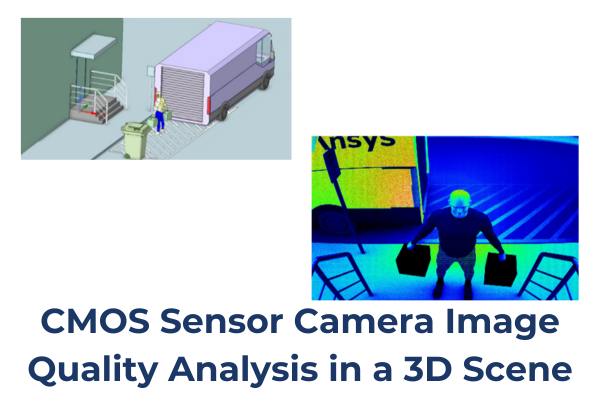
CMOS Sensor Camera Image Quality Analysis in a 3D Scene
In camera systems, the complementary metal oxide semiconductor (CMOS) imager is an electronic component where incident absorbed photons generate a photocurrent that can be digitally processed. Ansys’ complete optical solution can import the optical system information from Zemax OpticStudio and CMOS imager from Lumerical into Speos to perform a full camera system analysis in a 3D scene and simulate the electronic map, with a final image generated by the imager. This interoperability workflow takes into consideration the interplay between the macroscopic camera lens and the microstructure of the CMOS image sensor when simulating the entire optical system. With the Speos capabilities of handling realistic illumination and photometric/radiometric physics-based rendering, users can easily optimize the components and construct an accurate view of the final electronic map and image as recorded by the image sensor to design application-based cameras.
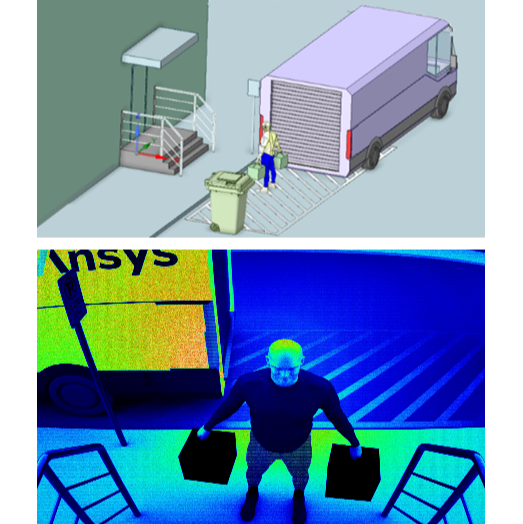
There are four Ansys optical tools used for this virtual solution:
- Zemax OpticStudio to export lens model designed in Zemax OpticStudio to be used by Speos
- Speos to generate spectral exposure map in front of the CMOS imager
- Lumerical FDTD (Finite Difference Time Domain) and CHARGE to compute the quantum efficiency of the sensor as a function of incidence angle and wavelength
- Speos Sensor System Exporter to combine Speos and Lumerical results and generate the electronic map captured by the sensor as well as the final image
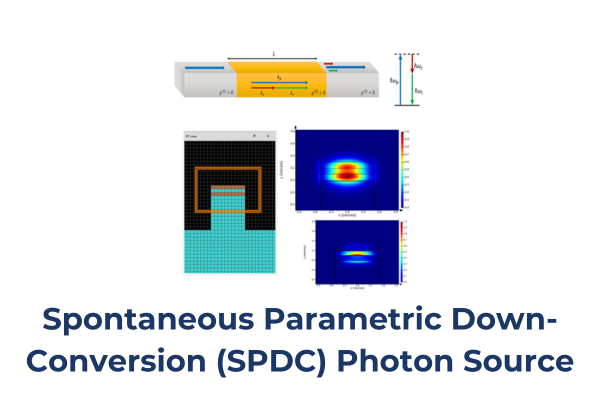
Spontaneous Parametric Down-Conversion (SPDC) Photon Source
Spontaneous parametric down-conversion is a nonlinear optical process where a photon at the pump frequency is converted to a pair of photons, labelled signal and idler, such that energy is conserved and phase matching conditions are satisfied. In Type-I SPDC, the signal and idler photons have the same polarization, which is orthogonal to the pump polarization. Spectral correlations between the signal and idler photon are described by the biphoton wavefunction, which limit the indistinguishability of single photon sources.
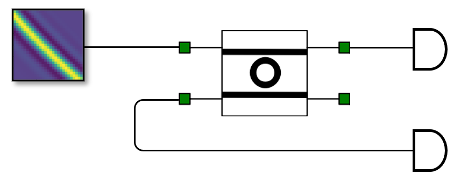
Once the biphoton wavefunction is generated, it can be used as the input to a circuit in qINTERCONNECT. For instance, a drop-ring filter can be used to separate the two photons from the source.
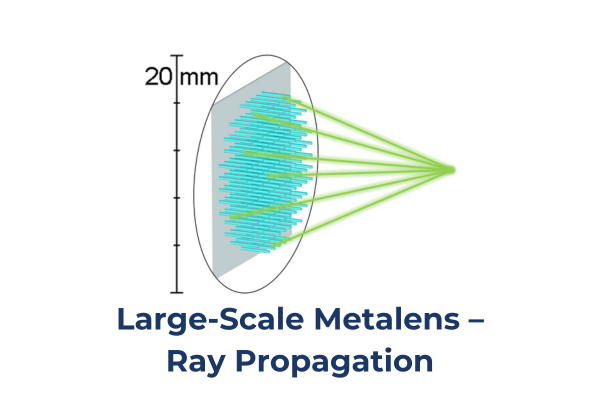
Large-Scale Metalens – Ray Propagation
Metalenses are advanced optical structures composed of nano-elements. By locally adjusting the individual cells, it is possible to create complex optical functions. Simulating this kind of device on a large scale is a challenge because it is not periodic, and it is composed of a large number of nano-elements. In addition, metalenses are intrinsically based on wave optics, but there is a need to integrate them into ray-tracing systems.
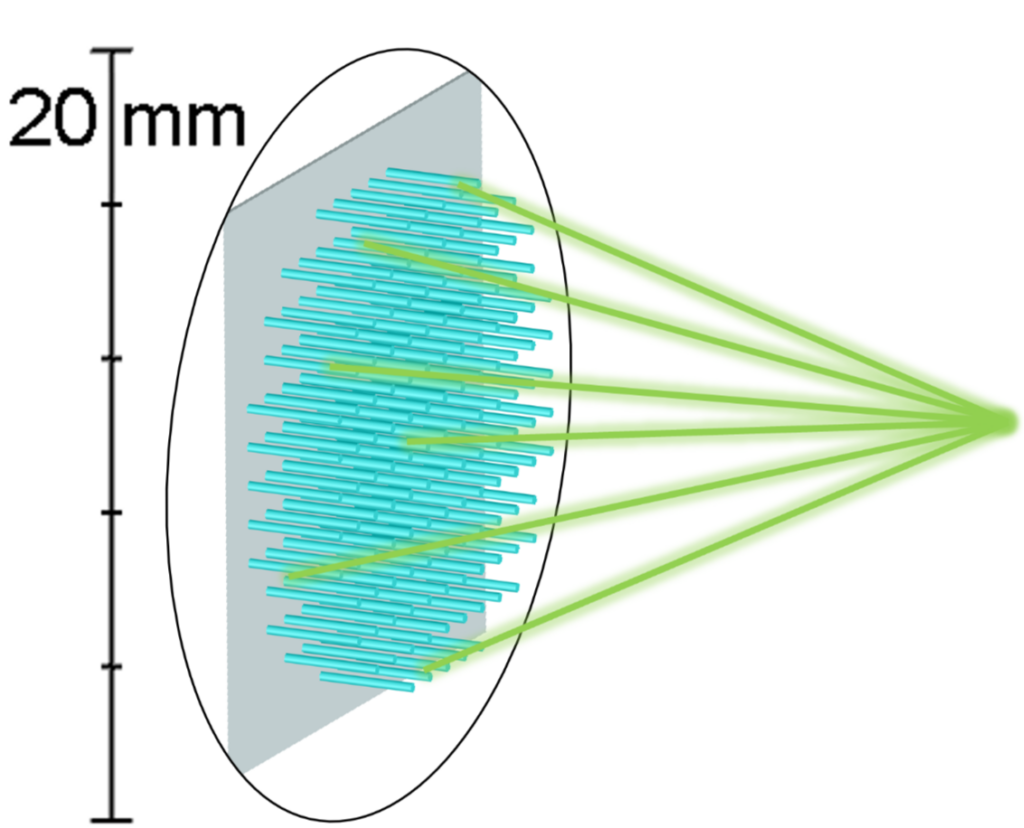
Zemax OpticStudio was used to design a metalens at the nano-element level and assemble it up to the centimeter-scale. The metalens was then integrated into a ray-tracing system. Zemax OpticStudio also provides a process to extract the metalens information into a GDS file for manufacturing.
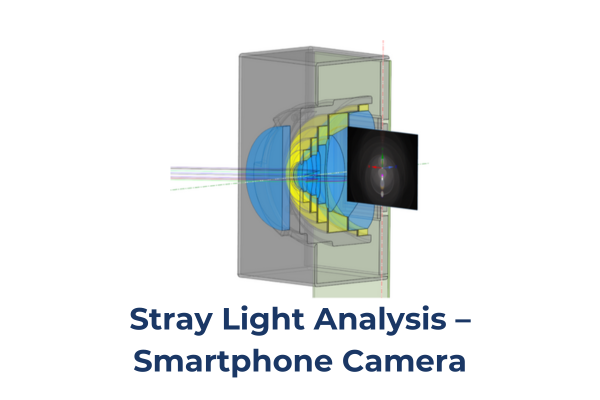
Stray Light Analysis – Smartphone Camera
The optical lens system is designed with Ansys Zemax OpticStudio (ZOS) and imported in one click to Speos using the new “Zemax Importer” tool for system level stray light analysis. The optomechanical components and lens edges used in this project can be designed in a CAD platform and later modified in Ansys Speos.
Stray light is accounted for using Speos features (Zemax Importer, light expert (LXP) and sequence detection).
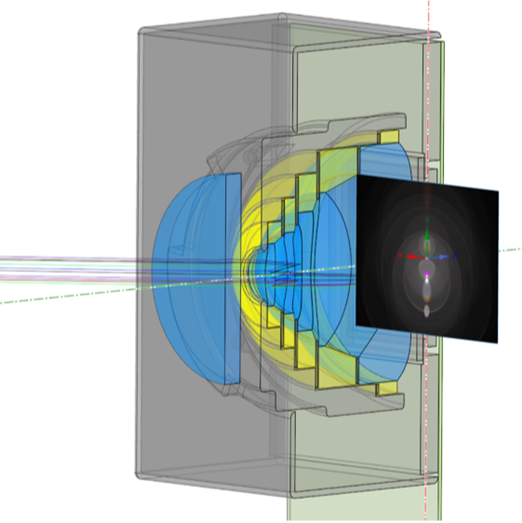
Shown above is a typical workflow for the analysis of stray light in a camera system when using Ansys tools. The workflow can be split into four parts:
- Import ZOS lens design to Speos using the Zemax Importer tool.
- Detection of all possible critical sun positions and light leakage for the complete system.
- Stray light simulation of four sun positions within the camera FOV (Optional).
- Analyzing the stray light path sequences and mitigate ghost stray light for one sun position.
